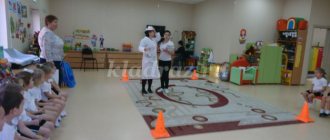We are earthlings. All countries, cities, forests and oceans known to us are located on one planet - Earth. It belongs to the solar system. The solar system is made up of eight planets revolving around one star, the Sun. In addition to Earth, the system includes Mercury, Venus, Mars, Jupiter, Saturn, Uranus and Neptune.
Earth is the third planet farthest from the Sun. And the only one of all the planets in our system on which there is life. Why?
Scientists believe that there are many conditions necessary for the emergence of life on the planet. This includes the temperature regime - not too hot and not too cold - and the presence of water, and the atmosphere in which there must be a number of certain elements, and much more. Not a single planet in the solar system, with the exception of Earth, meets all the requirements. Mercury is too hot, Uranus is very cold, Venus has no atmosphere at all. But our planet seems to have been created for life to arise on it.
Our article today will help you introduce your child to our amazing planet, tell you about the history of the Earth, its place in space, structure and other interesting facts.
Description of planet Earth for children
Earth is not the largest of the planets in the solar system. On the contrary, it is one of the smallest - only Mercury and Venus are smaller than it. But at the same time, the radius of the Earth is 6 thousand 371 kilometers.
The earth is almost perfectly round. At the poles it is slightly flattened. Therefore, two different radii of the Earth are often called: equatorial (in the middle of the planet) - 6378 km and polar (at the “ends”) - 6357 km.
In ancient times, people did not know that the Earth is spherical. They imagined something like a round flat plate. Only after the sailors circumnavigated the Earth and returned to the same place, it became clear that our planet is a ball. Now there is no doubt about it: we have seen many times photographs of the Earth taken from space. By the way, in many photographs the seas, mountains and even large cities are clearly visible.
Earth Rotation
The Earth, like other planets in the solar system, undergoes a complex rotation: around the Sun and around its axis (an imaginary line passing through the center of the planet). Moreover, around the Sun the Earth moves not in a circle, but in an ellipse - this is such an elongated circle.
It is thanks to this rotation that day and night come on Earth, and summer gives way to winter.
Everything is clear with the time of day: day is on that part of the planet that is currently facing the Sun, night is on the opposite. The Earth makes a complete rotation around its axis in approximately 24 hours - during this time a day passes on Earth.
The seasons are more complicated. The Earth makes a complete revolution around the Sun in 365 days. Many people think that the change of seasons is associated with the distance of the Earth from the Sun. But it is not so. The angle of the Earth's inclination relative to the Sun has a much stronger effect on air temperature. The fact is that the Earth's axis (around which rotation occurs) is tilted relative to the Sun by more than 23 degrees. And during rotation, the sun's rays fall on the Earth in different ways. If it’s straight, summer is coming, if it’s at an angle, it’s getting colder. The greater the slope, the colder it is.
The most direct rays fall to the equator, which is why the weather is almost always smooth there, and the extreme points of the Earth - the poles - are so inclined that the sun glides across the surface and does not warm the earth. That's why it's cold in the Arctic and Antarctic even in summer.
How did planet Earth appear?
The child will probably have a question about how our planet was formed. Scientists can only make assumptions on this matter; they do not have an exact answer.
The main hypothesis is that 4.6 billion years ago the Sun arose from a huge gas cloud, and under its influence, the planets of the solar system, including the Earth, were formed from the cosmic dust around. At that time, it bore little resemblance to the planet we live on. Most likely, it was a fireball, which, as it cooled, turned into a stone desert - without water, atmosphere and, of course, signs of life.
Gradually, under the influence of various processes occurring in the depths, various substances rose to the surface. Some turned into water, others participated in the formation of the atmosphere. This happened slowly: scientists believe that the formation of the oceans and surfaces took more than 200 million years.
What is planet Earth made of?
The child will be interested in learning about the structure of our planet. The earth, if you imagine it in cross-section, consists of several layers.
In the very center is the core, solid on the inside and liquid on the outside. Its composition is metal alloys, mainly iron and nickel. The core occupies most of the diameter of the earth, it is the size of the planet Mars. There is an inner and outer core. This part of the earth is very hot, and the deeper it is, the hotter it is. It is impossible to reach such a level, but, according to scientists, the temperature inside the core can be higher than in the Sun - up to 7 thousand degrees.
Above the core is the mantle. This is the most important layer of the Earth - and the largest (over 80% of the total volume). This is where most of the substances that make up the Earth are concentrated. These are mainly iron compounds, but the structure of the layer is not entirely solid: the mantle is rather viscous, so it is often said that the earth's crust “floats” on the mantle.
The earth's crust is the upper part of solid earth. Compared to other layers it is thin. There is continental and oceanic crust. The layer of continental crust reaches 40–50 kilometers, and under the oceans - 5–10. The crust makes up about 1% of the Earth's mass.
The earth's crust and upper mantle are called the lithosphere.
And the hydrosphere is the entire water part of the Earth’s surface, which includes the World Ocean, waters and glaciers, and groundwater.
It turns out that for a surface covered with water, the hydrosphere is located above the lithosphere.
Even higher is the atmosphere. This is no longer part of the planet, but its gas shell, which is located above the Earth and rotates with it.
The composition of the earth's atmosphere, and more specifically the oxygen content in it, played a key role in the emergence of life on Earth.
In addition to oxygen, nitrogen and other gases are present in the Earth's atmosphere. And thanks to the ozone layer in the atmosphere, the Earth is protected from most of the sun's ultraviolet radiation.
"Big City Tournament"
On September 6, the Big City Tournament, the first large-scale eSports event of the new academic year, starts in Moscow. All residents of the capital can take part in it. Players will compete in 11 eSports disciplines of different genres. The tournament will be held online and will provide an opportunity for Muscovites of different generations to find new topics for communication, better understand each other, and expand the range of common interests. And young eSports players will be able to demonstrate their skills and establish themselves in a professional environment. Registration for the tournament ends on September 5 at 21:00.
How life originated and developed on the planet
For millions of years, planet Earth remained uninhabited. Scientists have found confirmation that living organisms appeared on Earth about 3-4 billion years ago, during the Precambrian period of the Earth's development. Of course, these are not the animals we are used to, but protozoa - microorganisms.
More developed animals and plants appeared later - during a time called the Phanerozoic. This period is divided into 3 eras: Paleozoic, Mesozoic and Cenozoic. During the Paleozoic, invertebrates, insects and fish appeared; The Mesozoic gave us dinosaurs, and the Cenozoic gave us mammals. This happened more than 65 million years ago, and it is still believed that mammals are the highest stage of development for living organisms. Man is a mammal.
You might be interested in:
Inexplicable, but true: many children adore dinosaurs. If your child also enthusiastically watches cartoons and flips through pictures with these amazing giant creatures, we offer you our article with interesting facts about dinosaurs for children.
Olympics “Museums. Parks. Estates"
On September 1, the next season of the “Museums” Olympiad will begin. Parks. Estates." Schoolchildren in grades 1–11 will be able to expand their horizons by learning a lot about the history and culture of the city and country. Participants of the Olympiad will visit museums, parks and estates and complete tasks, for which they need to carefully study the corresponding exhibition. Pre-registration is required on the official project website.
Continents and oceans
71% of the Earth's territory is covered with water. The land exists in the form of six continents: Eurasia; Africa; North and South America, Antarctica and Australia. The largest continent is Eurasia, the smallest is Australia.
There are four oceans on Earth. They are connected to each other (this is the so-called World Ocean), but at the same time they differ greatly - in temperature, bottom features, salinity. The Pacific Ocean is the largest and deepest, the second largest is the Atlantic, the third is the Indian (compared to the Atlantic, it is smaller but deeper). And the smallest is the Arctic Ocean. It is also the coldest because it is located near the North Pole and is partially covered with ice.
On our planet there are four climatic zones - these are territories that seem to encircle the planet. In one zone all over the Earth there are approximately the same conditions for life: temperatures, humidity, precipitation.
The equatorial belt runs through the very center of the Earth. Here the weather hardly changes throughout the year - summer, it rains and about +25 degrees.
There are two tropical zones, they are located on both sides of the equatorial one. It is dry and warm here, but the difference between summer and winter is already obvious: in winter it can be about +15 degrees, but in summer - up to +50.
We are familiar with the climate with cold winters and warm summers. It is typical for temperate zones. There are also two of them, and they are located after the tropical ones in the direction from the equator.
Arctic zones are located at the Earth's poles. It is the coldest here, especially in winter. But even in summer the temperature rarely rises above zero.
Of course, this division is conditional. The climate does not change dramatically when moving from one climate zone to another. There are transition poles: two subequatorial, two subtropical and two subpolar, where the characteristics of neighboring poles appear. If you move smoothly from one belt to another, changes in the weather are practically unnoticeable. But if you fly by plane, you can feel the difference.
The weather in different parts of the Earth depends not only on the distance from the equator, but also on the topography. The main types of relief on Earth are mountains and plains.
In terms of area, plains occupy most of the land. We can see this on a map or globe. Neither of them, plains and mountains, depending on their height, are indicated in green, yellow or brown. The highest mountains are dark brown (Himalayas, Andes, Caucasus).
The highest point of land in the world is Mount Chomolungma in the Himalayas - 8848 meters above sea level. And the lowest is in the ocean, this is the Mariana Trench (11,022 meters below sea level).
"Moscow cinema at school"
It will be possible to see and discuss films from the golden fund of Russian cinema with teachers, actors and directors in September.
Schoolchildren of different ages and college students will immerse themselves in the atmosphere of films that their parents love and watch, and will study the history, culture and filmography of Russian cinema. Films of different genres are included in the educational process.
You can view the list of recommended films taking into account the age characteristics of children on the official website of the Moscow Cinema at School project.
Digital solutions
Several online resources will be of great help to teachers: the School Projects Laboratory being developed by Enlightenment (will be available in the fall of 2021) and Proobskills.
Work in the School Projects Laboratory includes 3 stages:
- The simplest level: a novice designer needs to fill in the empty fields of the template with a theme and bring the work to its logical conclusion;
- The second stage is a little more difficult. Here the child will have to adjust the structure of the project or research himself;
- The third level, where the student creates his own project independently, and the teacher acts as a curator.
The uniqueness of “Proobskills” lies in the provision of checklists to all participants. This methodical and meticulous approach has undeniable advantages:
- The relevance of the research will be justified at the initial stage of work;
- A clear and understandable formulation of the technical specifications, which will simplify the process of its implementation;
- Selection of required literature. During preparation, the child will learn to independently cut off unreliable sources of information;
- Tracking all the nuances of the research process. Using the designer’s checklist, the teacher will see how the work is progressing, what mistakes have been made, where the knowledge base or perseverance was lacking;
- A step-by-step analysis of the progress of work, its adjustment and final protection will enhance the quality of the result obtained.
"Animation in your smartphone"
In the 2021/2022 academic year, the creative project “Animation in your smartphone” will be held for the second time. Its participants will have to create short animated films on the topic of volunteering and good deeds. A special online course will help them learn mobile animation. The students’ work will be assessed by representatives of the animation and documentary film industries, volunteer organizations and media. The project will begin in November, and the winners will be awarded in April, on Russian Animation Day. Detailed information about the project will be published on the website.



